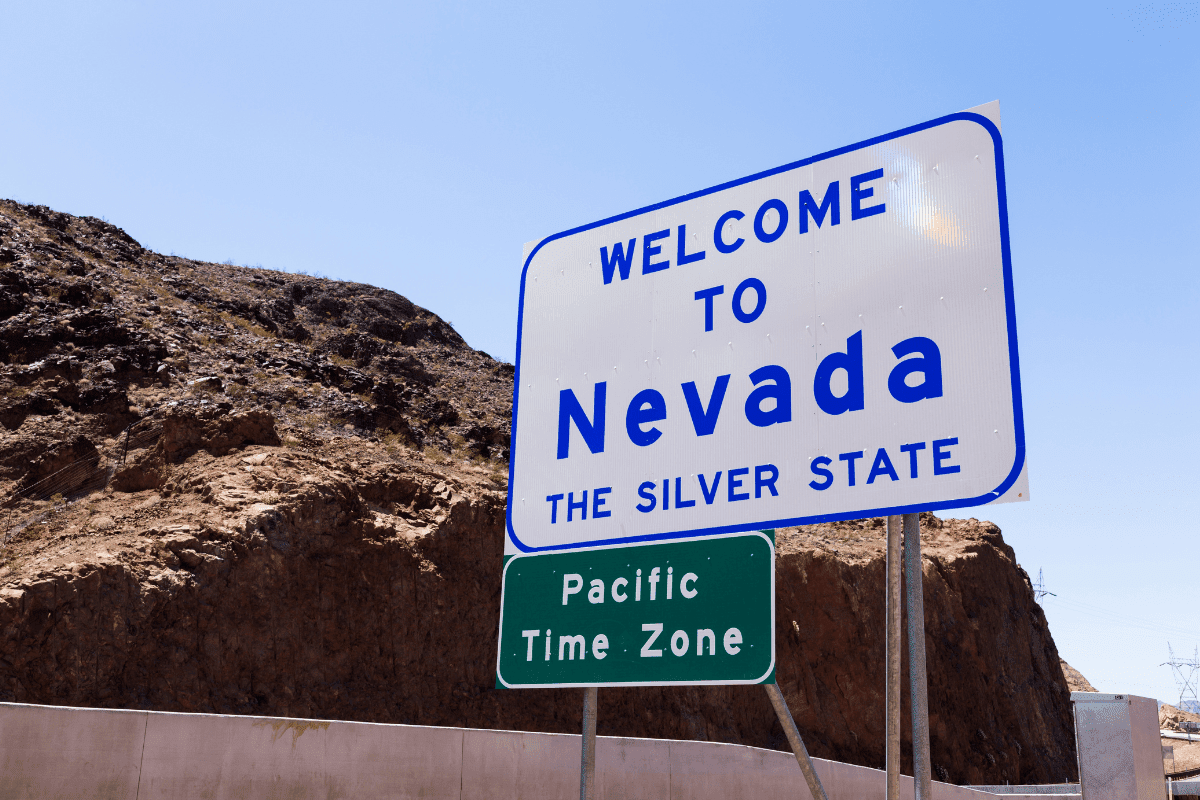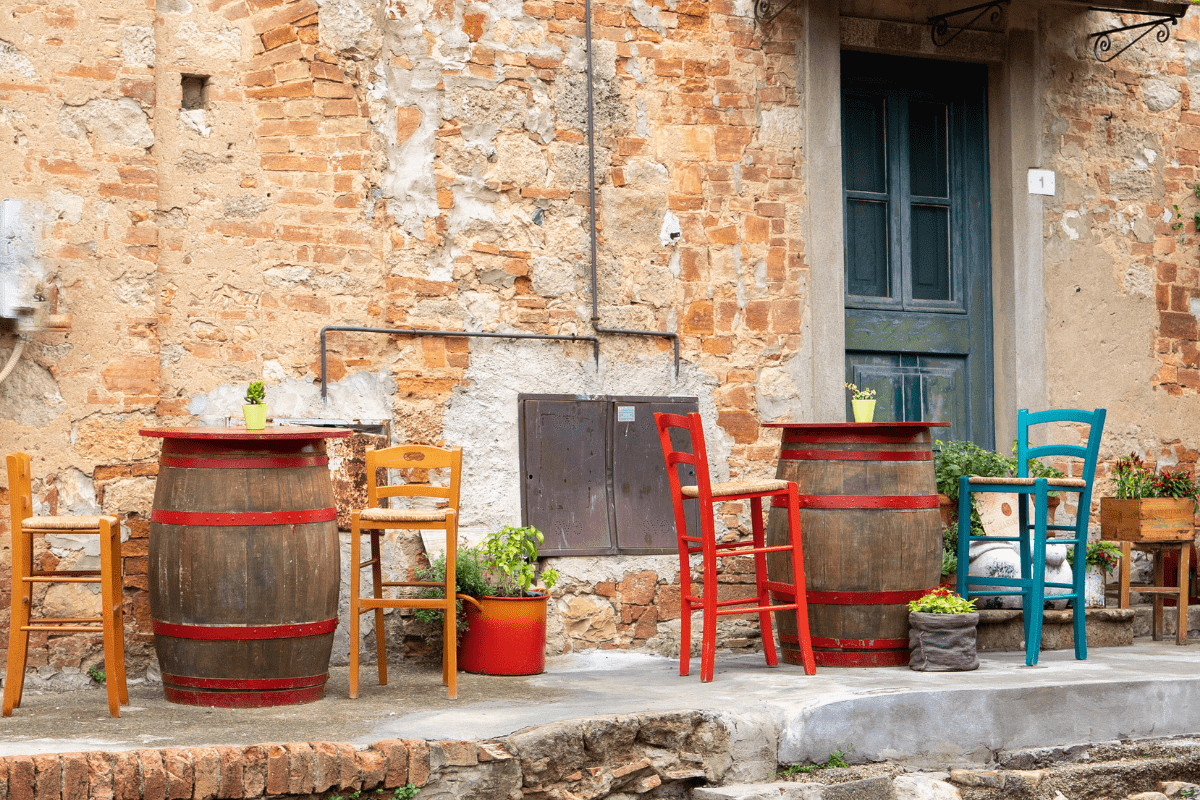If you've ever wondered why Nevada needed 23 official state symbols, you're not alone. But once you discover that we flew the wrong flag for 62 years and that our state fossil swam here 225 million years ago, you'll understand why the Silver State takes its symbols seriously.
The foundation symbols that defined a state
Nevada's journey into official symbolism began with the kind of urgency only a Civil War could create. When you're rushing to become a state to help President Lincoln win reelection, you don't have time for lengthy debates about seal designs.
The Great Seal of Nevada, adopted on February 24, 1866, tells our entire origin story in one crowded circle. Picture this: a quartz mill and miner's tunnel dominate the foreground, because what else would you expect from a state literally built on silver? A railroad train chugs through mountain gorges in the background, while the sun rises over snow-capped peaks. The whole scene is surrounded by 36 stars, marking Nevada as the 36th state to join the Union.
The seal's motto change reveals just how serious things were back then. We ditched the fancy Latin phrase "Volens et Potens" (Willing and Able) for the straightforward "All for Our Country." As former state archivist Guy Rocha noted, this sent "a strong message to a wounded nation only a few months removed from the Civil War." No pressure or anything.
The flag fiasco nobody noticed for decades
Here's where things get embarrassing. Remember how your teacher always said to double-check your work? Well, Nevada's legislature should have listened. In 1929, a clerical error led to the wrong flag design being submitted and signed into law. For 62 years, we proudly flew a flag that wasn't technically our official flag. It wasn't until 1991 that a legislative researcher discovered the mistake and finally corrected it.
The current flag features a silver star on cobalt blue with sagebrush sprays and the words "Battle Born" emblazoned across the top. Louis Shellback III, who won the 1926 design contest with a whopping $25 prize, never lived to see his actual design flying over the state. He was a highway department artist and part-time archaeologist, which honestly sounds like the most Nevada job combination ever.
If you want to dive deeper into this bureaucratic comedy of errors, the Nevada State Library has all the historical documents that nobody apparently read for six decades.
Nature's survivors tell Nevada's story
Nevada's wildlife symbols showcase creatures that laugh in the face of adversity. Living in the driest state in the nation requires some serious survival skills, and our official animals have them in spades.
Desert bighorn sheep: the comeback kids
The desert bighorn sheep, our state animal since 1973, represents one of the West's greatest conservation success stories. These tough-as-nails animals went from fewer than 2,000 in the 1960s to approximately 14,000 today, giving Nevada the highest population in the lower 48 states.
What makes these sheep so special? Let me count the ways:
- Survive weeks without water
- Lose 30% body weight and live
- Navigate cliffs like mountain goats
- Sport horns worth their weight
- Look majestic doing it all
Just this year, wildlife officials relocated 40 bighorn from Oregon to the Black Rock Desert area, continuing the restoration efforts. These animals can spot movement a mile away and bound up near-vertical cliffs that would make a rock climber jealous. Their specialized hooves act like suction cups on steep terrain, proving that evolution really knows what it's doing.
The giant trout that time forgot
The Lahontan cutthroat trout, our state fish since 1981, tells a sadder tale. These prehistoric giants once swam in 6,864 miles of streams throughout the Lahontan Basin. Today? They occupy just 588 miles of streams. That's like going from a cross-country road trip to a drive across Rhode Island.
These aren't your average trout either. The official record stands at 41 pounds from 1925, but historical accounts describe fish exceeding 60 pounds. Imagine trying to reel in something the size of a golden retriever. No wonder Native Americans called Pyramid Lake "cui-ui pah," meaning "lake of the cui-ui fish."
The Lahontan cutthroat evolved over 10 million years in the isolated Lahontan Basin, making them unique witnesses to Nevada's geological history. For current conservation efforts and fishing regulations, check out the Nevada Department of Wildlife.
Desert tortoise: the underground urbanites
Our state reptile since 1989, the desert tortoise, has figured out the ultimate Nevada real estate strategy: go underground. These ancient reptiles spend 95% of their lives in burrows that can extend 30 feet deep. That's basically a studio apartment with natural climate control.
Desert tortoises can live 50 to 100 years and survive an entire year without water by storing it in their bladders. But here's the catch – if you frighten one and it urinates, that water loss can be fatal in the desert. So if you see one, admire from a distance. Their defense mechanism literally depends on you not being a jerk.
Unfortunately, populations have declined by 90% in some areas due to disease, invasive plants creating unnatural fire cycles, and increased predation. Ravens, subsidized by human garbage, have become particularly problematic predators of young tortoises.
Mountain bluebird: the hovering hunters
Nevada's state bird since 1967 brings a flash of brilliant turquoise to our mountain meadows. With a global population of 4.6 million, you'd think they'd be doing fine, but they've actually declined by over 20% since 1966.
These cavity-nesting birds have a unique hunting style, hovering like tiny helicopters as they scan for insects below. During migration between Mexico and Alaska, they travel in flocks of up to 50, creating clouds of blue across the desert sky. Male mountain bluebirds are entirely blue, while females sport a more subtle gray-blue coloring, proving that sometimes nature plays favorites.
Plants that define the Silver State landscape
Nevada's plant symbols perfectly capture our "beauty in harsh places" aesthetic. These aren't your typical roses and daisies; these are plants that thrive where others fear to grow.
Sagebrush: not your garden variety state flower
Since 1917, sagebrush has served as Nevada's state flower, though calling it a flower requires some imagination. This silvery-gray shrub covers an astounding 66% of our state, approximately 87,500 square miles of aromatic stubbornness.
Sagebrush can live over 100 years, and its three-lobed leaves (hence the scientific name Artemisia tridentata) have adapted perfectly to Nevada's harsh conditions. The deep root system can extend 13 feet down, tapping into water sources other plants can only dream about. According to ethnobotanist Daniel Moerman, sagebrush ranks among the ten most extensively used plants in Native American culture. They used it for everything from medicinal teas to making rope from the bark.
Fun fact: that distinctive smell after a desert rain? That's sagebrush releasing aromatic oils, nature's own air freshener.
Two trees are better than one
Nevada stands unique among states with two official trees, because why choose when you can have both? Each represents different elevations and ecosystems in our diverse landscape.
The single-leaf pinyon, adopted in 1953, holds the distinction of being the world's only one-needled pine. These trees provided pine nuts that sustained Great Basin tribes for over 6,000 years. Talk about a sustainable food source. The trees can live 800 years and produce thousands of seeds in good years, though they need 30 to 60 years to reach reproductive maturity. That's playing the long game.
The bristlecone pine, added in 1987 after a campaign by Ely students, makes the pinyon look young. These are Earth's oldest living non-clonal organisms, with some specimens exceeding 4,900 years old. That means some of these trees were already ancient when the Egyptian pyramids were built. They grow at elevations above 9,000 feet, where the harsh conditions actually help them live longer by slowing their growth.
Geological treasures from the Silver State
Nevada's geological symbols tell the story of a state literally built on mineral wealth. Without silver, we might still be part of Utah Territory, and nobody wants that.
Silver: the metal that made Nevada
Silver became our state metal in 1977, which seems surprisingly late given that it's literally in our nickname. The 1859 Comstock Lode discovery near Virginia City changed everything. In its first 20 years alone, it yielded over $300 million in silver and gold, creating instant millionaires and financing the Union's Civil War efforts.
Nevada remains America's second-largest silver producer, with 2014 production reaching 10.93 million troy ounces. Not bad for a state everyone thought was just desert and tumbleweeds.
Black fire opal: Nevada's exclusive gemstone
The Virgin Valley black fire opal, our precious gemstone since 1987, exists nowhere else on Earth in such quality. These stunning gems formed 15 million years ago when volcanic eruptions buried ancient forests. The wood slowly turned to opal, creating spectacular plays of color against jet-black backgrounds.
Some famous specimens include:
- Roebling Opal: 2,585 carats unpolished
- Black Peacock: 160 carats of perfection
- Rainbow Ridge Opal: sold for $50,000
- Virgin Valley specimens: up to $156,000
Want to try your luck? Several fee-dig mines near the Oregon border let visitors search for their own treasures. Just remember, finding a valuable opal is slightly harder than winning at slots.
Turquoise: the other blue gold
Nevada turquoise, our semi-precious gemstone also adopted in 1987, has adorned Native American jewelry for millennia. We have more turquoise mines than any other state, with distinctive stones from places like the Blue Gem Mine near Battle Mountain creating a category called "Lander Blue."
Much of Nevada's turquoise occurs in nugget form with unique matrix patterns. Each stone is like a fingerprint, making authentic Nevada turquoise highly prized by collectors and jewelry makers worldwide.
Sandstone: chosen by kids who knew better
In 1987, Nevada schoolchildren voted to make sandstone our state rock, proving that kids often make better decisions than adults. This 150-million-year-old rock tells the story of ancient sand dunes from when Nevada was a vast desert. Wait, it's still a vast desert. Some things never change.
The spectacular red Aztec sandstone at Valley of Fire State Park appears to burn in reflected sunlight and is actually visible from space. This same stone built Nevada's Capitol, the former U.S. Mint building, and other historic structures throughout the state.
Ancient life preserved in stone
The ichthyosaur, Nevada's state fossil since 1977, swam in warm seas covering central Nevada 225 million years ago. These marine reptiles looked like dolphins on steroids, reaching lengths of 55 feet.
Berlin-Ichthyosaur State Park protects nearly 40 specimens, with recent research suggesting the site served as an ancient breeding ground. The park uniquely combines paleontology with history, preserving both the fossil beds and the 1890s ghost town of Berlin. It's like getting two field trips for the price of one.
Cultural symbols: bridging ancient traditions and modern identity
Nevada's cultural symbols reflect both our ancient heritage and our knack for reinvention. From prehistoric duck decoys to Depression-era anthems, these symbols capture the human side of the Silver State.
Tule duck decoys: the world's oldest
The tule duck decoy, our state artifact since 1995, represents the world's oldest known duck decoys at approximately 2,000 years old. Discovered in Lovelock Cave in 1924 among 10,000 other artifacts, these remarkable creations of bundled tule reeds and feathers showcase the ingenuity of the "People of the Marsh" in Northern Paiute tradition.
The decoys were so realistic that when archaeologists first found them, they thought they were looking at mummified ducks. Today, Native artists like Mike Williams of the Fallon Paiute-Shoshone Tribe continue this ancient craft, connecting past to present.
"Home Means Nevada": born from a scheduling snafu
Our state song since 1933 has the best origin story ever. Composer Bertha Raffetto mistakenly marked her calendar and had just one day to prepare for the Nevada Native Daughters picnic. Working from 10 a.m. to 4 a.m., she created a song that captures Nevada's natural beauty with references to the Kit Carson trail, Truckee River, and native plants.
Despite performing it 187 times in three months, Raffetto refused payment during the Great Depression, saying, "How abhorrent it would have been to me, to ask money for a song when so many were needing bread!" That's class you can't buy.
Modern symbols for a modern state
The 21st century brought symbols that acknowledge Nevada's evolution from mining camps to entertainment capital to tech hub.
State tartan: every thread tells a story
The state tartan, adopted in 2001, took designer Richard Zygmunt Pawlowski two years to create. This isn't just some random plaid pattern; every thread count carries meaning:
- Blue represents Lake Tahoe and Mountain Bluebird
- Silver honors our mining heritage
- Red reflects southern Nevada's rock formations
- Pattern intersections represent 1864 and Boundary Peak's elevation
It's basically Nevada's story woven into fabric. How's that for overthinking a design?
Engine No. 40: the little locomotive that could
Engine No. 40, our state locomotive since 2009, still runs on original tracks at the Nevada Northern Railway Museum in Ely. This 1910 Baldwin locomotive represents Nevada's railroad heritage, crucial for connecting remote mining camps with distant markets.
The Smithsonian's transportation curator called it "the prettiest 20th century locomotive running anywhere," which is high praise from people who look at trains all day. Visitors can actually ride behind this piece of history, making it one of our few state symbols you can physically experience.
Neon: because of course
In 2019, Nevada made history by becoming the first state to designate an official chemical element. Fifth and sixth-grade students from Carson Montessori School championed neon, learning chemistry, civics, and democracy in the process.
Student Diego Villalobos nailed it: "Neon is something that everybody recognizes about Nevada." When you think Nevada, you think glowing signs promising fortune and entertainment. These kids understood our brand better than any marketing team.
The complete collection
Nevada's 23 official symbols place us among the states with the most comprehensive symbolic portfolios. Recent years have seen no new proposals in the legislature, suggesting we've reached "symbolic satisfaction."
From ancient fossils to modern elements, from desert survivors to mountain dwellers, these symbols create a narrative of adaptation, transformation, and resilience. They serve not just as emblems on flags and seals but as educational tools connecting Nevadans to their remarkable heritage.
Whether you're gazing at ancient bristlecone pines that predate human civilization or watching neon signs flicker to life at dusk, Nevada's symbols remind us that this seemingly harsh landscape has always rewarded those willing to adapt, persevere, and find beauty in the extraordinary. And honestly, in a state where people once flew the wrong flag for over half a century and nobody noticed, that's pretty encouraging.





